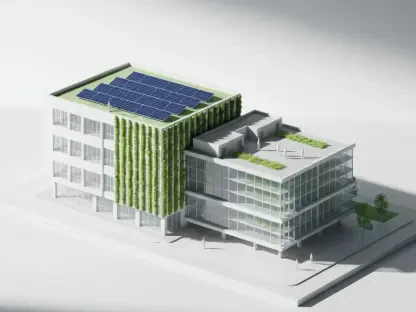In the ever-evolving world of real estate, Luca Calarailli stands out with his deep expertise in construction, design, and architecture. He has also embraced technological advancements to propel the industry forward. In our conversation, Luca delves into the current state of the rental market, the impact of economic conditions, and regulatory challenges that could shape the future of real estate. His insights provide a comprehensive understanding of how various factors interplay and their implications for market stakeholders.
Can you elaborate on the reasons why Hamptons downgraded the rental growth forecast from 4.5% to 1.0% for 2025?
The downgrading of Hamptons’ forecast primarily stems from a combination of declining tenant demand and economic shifts. Falling mortgage rates have enabled more people to purchase homes, reducing rental demand. Additionally, the broader economic slowdown, influenced by job losses especially in sectors like hospitality, has further cooled the market. These combined elements drove the revision of rental growth expectations.
How have falling mortgage rates impacted tenant demand in the rental market?
Falling mortgage rates have had a significant effect by making home ownership more accessible to renters. This has enabled tenants who were on the cusp of considering a home purchase to finally take that step, decreasing rental demand. It’s especially noticeable among more affluent renters who have the financial flexibility to become first-time buyers now that borrowing is cheaper.
What role do first-time buyers play in the current housing market dynamics?
First-time buyers are crucial as they represent a significant portion—33% of homes sold across Great Britain. They’re essentially acting as a balancing force; while they transition from renting to ownership, they create a vacancy chain that could potentially alleviate supply shortages. However, their movement also amplifies demand for houses, influencing broader market dynamics.
Could you discuss how job losses, especially in hospitality and graduate roles, are affecting the rental market?
Job losses in pivotal sectors are making it difficult for many individuals to maintain or afford rent, pushing them to look for more affordable accommodations, sometimes further afield. This situation contributes to a softer rental market as those affected either pull out of the rental pool or seek cheaper options which affect the rental price growth.
How did the rental market soften more quickly than anticipated toward the end of last year?
The rental market’s unexpected softening was largely due to a combination of quick economic changes and an unprecedented drop in tenant demand. There was a swift pivot among potential renters toward home ownership due to favorable mortgage conditions paired with increasing economic uncertainty, prompting a rapid cooling in rental growth rates.
What evidence suggests that the slowdown, initially centered in London, is now affecting other regions?
While the rental decline began in London, recent statistics show a widespread decrease in rents across different regions including Wales and Scotland. This indicates that the factors driving the slowdown, such as economic uncertainty and shifting tenant behaviors, are permeating beyond London, affecting the broader national market.
Can you explain how the rental market dynamics are shifting due to a weaker labor market?
A weaker labor market impacts renters’ financial security, limiting their ability to afford current rental rates and often diminishing their willingness to spend on housing. This situation pushes many to downsize or seek alternative living arrangements, thus softening demand and exerting downward pressure on rental price growth.
Why are more affluent renters choosing to become first-time buyers now?
Affluent renters are capitalizing on the lower interest rates to transition into homeownership. They recognize an opportunity to invest in property, taking advantage of reduced borrowing costs as well as seeking stability amid uncertain rental market conditions.
What has caused the rent increases in newly let properties to be at their weakest since August 2020?
The sluggish rent growth in newly let properties reflects decreased demand amid a backdrop of economic uncertainty and shifting tenant preferences toward homeownership. Additionally, as the market recalibrates, competition among landlords to attract the limited pool of renters can also suppress rent hikes.
Although there has been a current slowdown, what medium-term factors are expected to drive rental growth?
Despite the current slowdown, unresolved supply shortages remain a primary driver for medium-term rental growth. Coupled with upcoming regulatory changes that might constrain supply further, these factors are poised to maintain upward pressure on rents as demand slowly recovers.
How might the Renters’ Rights Bill and new EPC requirements further constrain rental supply?
The Renters’ Rights Bill and new Energy Performance Certificate (EPC) requirements will likely impose additional costs on landlords to comply, potentially deterring investment in rental properties. This could reduce the number of available rental homes as some landlords might exit the market or delay bringing properties to the market, thereby constraining supply.
What consequences do you foresee from the slowdown in build-to-rent development this year?
The slowdown in build-to-rent developments limits the influx of new rental properties, exacerbating existing supply constraints. This reduction in supply, against a backdrop of gradual demand recovery, may create pressure on rental prices in the coming years as the market adjusts to a lower availability of rental options.
What short-term recalibrations in the market might affect rental growth predictions?
Short-term market recalibrations could include further economic adjustments, shifts in employment rates, and the immediate impact of new regulations. These elements might temporarily curb rental price growth or even stabilize rents if landlords and renters both become more cautious due to uncertainty surrounding these changes.
How do supply shortages continue to contribute to rental growth despite current demand cooling?
Even though demand has cooled, persistent supply shortages mean that any slight increase in demand or a reduction in available rental homes can quickly drive up prices. Landlords can exploit these shortages to maintain or increase rents as tenants have fewer options, keeping rental growth on the horizon.
Could you comment on how landlords might be affected by these upcoming regulatory changes in terms of costs?
Upcoming regulations will likely impose additional costs on landlords, ranging from compliance with new energy performance standards to honoring tenant rights outlined in the legislation. This financial pressure might encourage some landlords to pass costs onto tenants through increased rents or prompt others to reconsider their investment strategies, potentially reducing the number of rental properties in the market.
Do you have any advice for our readers?
For those involved in the rental market, it is crucial to stay informed about economic shifts and regulatory changes. Renters should assess their long-term housing plans, considering both renting and buying opportunities, while landlords need to weigh the costs of compliance against potential returns. Remaining adaptable will be key in navigating the evolving landscape.









